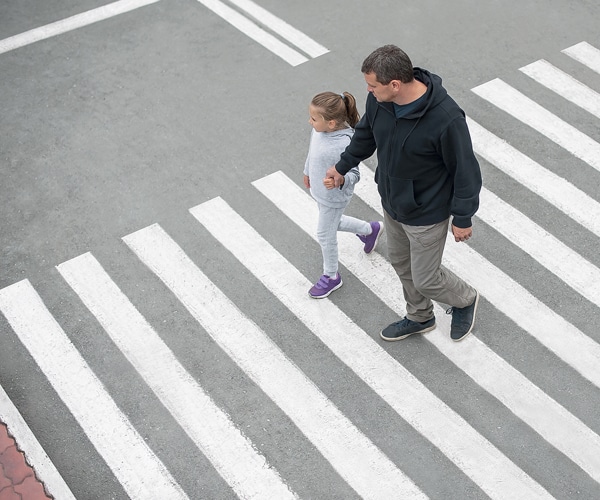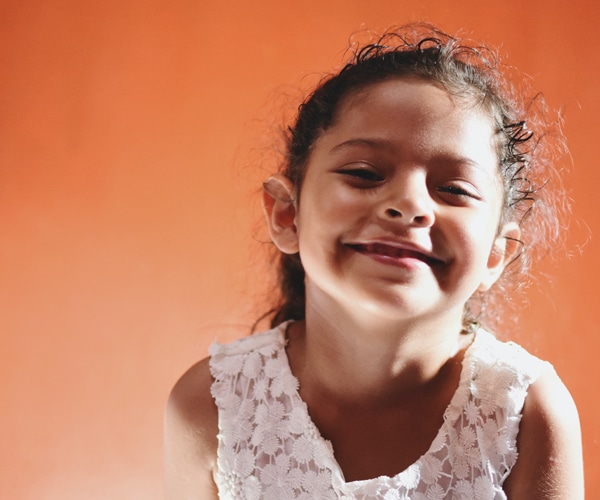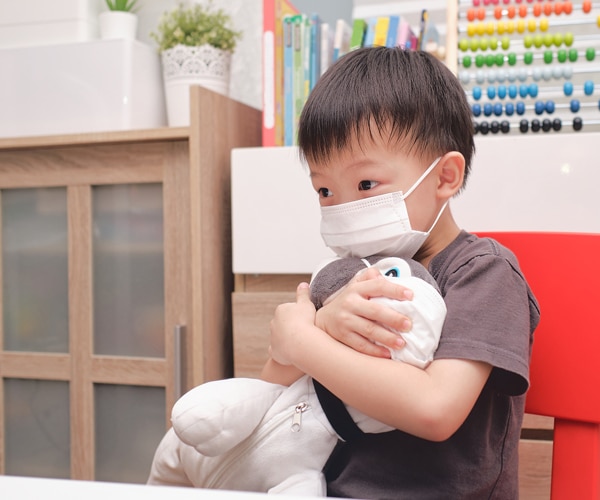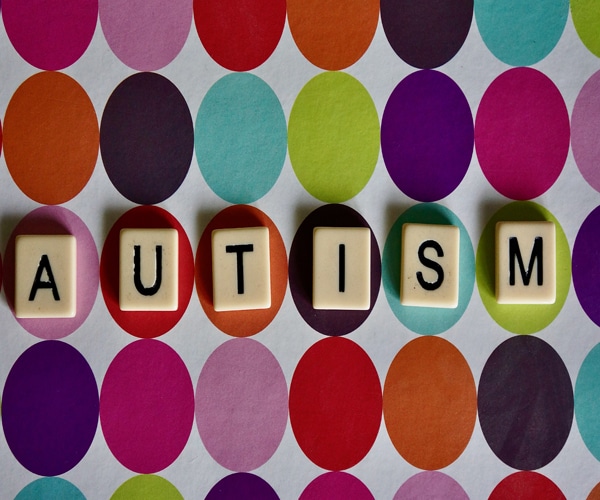Did You Know?
Moving eyes and thoughts may help kids move on from trauma
May 15, 2023In a head-to-head trial, both Eye Movement Desensitization and Reprocessing (EMDR) and Cognitive Behavioural Therapy (CBT) led to improvements on posttraumatic stress disorder (PTSD) diagnostic measures by three-month follow-up.
Specifically, 86–95.0% of children who had been treated with EMDR were diagnosis free after three months, compared with 87 to 89% of children who had been treated with CBT (figures varied by informant, whether self- or parent-report), with no significant differences between the two treatments.
At one-year follow-up, even more children were diagnosis free. By self-report, 100% of EMDR children and 92% of CBT children were diagnosis free after one year, with no significant difference between the two groups.
But by parent report, there was a statistically significant difference favouring EMDR, with 100% of children who received this treatment being diagnosis free, compared to 88% of those who received CBT.
Beyond diagnoses, both EMDR and CBT also reduced PTSD symptoms at three-month and one-year follow-ups, with no significant difference between the two treatments. In sum, both treatments were effective, with EMDR showing only one statistically significant benefit over CBT — greater reductions in PTSD diagnostic rates by parent report at one-year follow-up. Table 4 summarizes these outcomes. For more information, see Vol. 15, No. 2 of the Children’s Mental Health Research Quarterly.

How to treat PTSD?
May 8, 2023Once a child has been diagnosed with PTSD, and their safety has been assured, they need immediate access to effective treatments. The Children’s Health Policy Centre has conducted a systematic review on what such treatments entail.
Among the successful interventions was Prolonged Exposure, a program based on cognitive-behavioural therapy (CBT). It led to statistically significant improvements for all PTSD-related outcomes. In particular, 63% of Prolonged Exposure youth were diagnosis free at six-month follow-up, compared to 26.% of controls. Prolonged Exposure youth also reported significantly fewer PTSD symptoms, differences that were both statistically significant and clinically meaningful. However, group differences were no longer significant for the one PTSD symptom measure used at 17-month follow-up.
In a second Prolonged Exposure study, the intervention led to significant improvements on most PTSD- related outcome measures. In particular, 89 % of Prolonged Exposure youth were diagnosis free at one- year follow-up, compared to 54 % of controls. Prolonged Exposure youth also had significantly milder PTSD symptoms than controls by both self-report and examiner ratings, with a large effect size for the latter. But there was no significant difference on a measure that combined the number and severity of self-reported PTSD symptoms. Finally, overall functioning improved significantly more for Prolonged Exposure youth.
A treatment called KIDNET, which also based on CBT, similarly led to several benefits at four-month follow-up. Intervention children had significantly fewer intrusive thoughts and avoidance symptoms. KIDNET also significantly reduced the severity of PTSD symptoms — by 60%. As well, 84% of intervention children no longer met diagnostic criteria for PTSD, compared with 30% of controls. KIDNET also led to better overall functioning. Hyperarousal was the only PTSD symptom that this intervention did not significantly improve.
The sole medication trial found no difference in posttraumatic stress symptoms for children on D-cycloserine compared with controls at three-month follow-up. Importantly, both intervention and control children received CBT — and all had significantly lower posttraumatic stress symptom scores at follow-up. In fact, scores were reduced by approximately 50% between baseline and follow-up, suggesting benefits from CBT.
For more information, see Vol. 15, No. 2 of the Children’s Mental Health Research Quarterly.

You can celebrate Child & Youth mental health day
May 1, 2023The key message or theme for Canada’s Child & Youth Mental Health Day, May 7, is “I care about you.”
Founded by FamilySmart in 2007, the special day aims to build caring connections between young people and the adults in their lives. It is intended to create awareness and acknowledgement of the thousands of children, youth, and families needing mental health support and care across Canada.
In honour of the day, in 2019, the Children’s Health Policy Centre released its 50th issue of the Quarterly publication about children’s mental health research. This celebratory edition — focusing on good news to safeguard children’s health — is titled Celebrating children’s mental health: 50 lessons learned.

Identifying PTSD risk can encourage resilience
April 17, 2023Many children show great resilience in the face of adversity. In particular, approximately 75–90% of children exposed to trauma do not develop PTSD. Factors that protect children from developing this disorder include strong family and peer supports. Besides recognizing protective factors, it is also important to consider risk factors for developing PTSD after trauma.
To determine risk factors, researchers systematically identified and analyzed 40 long-term studies on posttraumatic stress reactions in children. Predictors for developing posttraumatic stress reactions included injury severity and days in hospital, as well as the stress symptoms occurring soon after the trauma.
Having a parent with posttraumatic stress symptoms also increased risk, as did the child having symptoms of depression or anxiety. In contrast, child age, ethnicity and socio-economic status were unrelated to risk.
The research as to what increases risks for posttraumatic stress also suggests ways to help, for example, by strengthening family supports. But the foremost goal should be to prevent avoidable childhood adversities wherever possible.
When trauma cannot be prevented, ensuring the child’s basic safety is the first step. And if PTSD symptoms have developed, effective treatments are urgently required. For more information, see Vol. 15, No. 2 of the Children’s Mental Health Research Quarterly.

What are the symptoms of Complex PTSD?
April 10, 2023A condition known as Complex Posttraumatic Stress Disorder has been recognized by the World Health Organization, in its International Classification of Diseases, 11th revision. Calls to recognize complex PTSD as a distinct disorder arose from concerns that the PTSD diagnosis may not adequately capture the experiences of those exposed to repeated traumas.
Complex PTSD is recognized as typically developing after prolonged exposure to extremely threatening or horrific events such as repeated sexual or physical abuse that the child cannot escape from. Complex PTSD includes all the PTSD criteria — coupled with severe and persistent difficulties in regulating emotions, along with experiencing guilt or shame related to the trauma and challenges in sustaining relationships. For more information, see Vol. 15, No. 2 of the Children’s Mental Health Research Quarterly.

How often does PTSD occur?
April 3, 2023At any given time, approximately one in a thousand children develop posttraumatic stress disorder (PTSD) after being exposed to serious adversities. In British Columbia, as many as 700 children may have PTSD at any given time. According to the 5th edition of the American Psychiatric Association’s Diagnostic and Statistical Manual of Mental Disorders, to receive a PTSD diagnosis, children must meet the following criteria:
- Being exposed to actual or threatened death or serious injury or sexual violence — through directly experiencing or witnessing or learning of such events
- Experiencing clinically significant problems related to the trauma that continue for a month or more and that impair the child’s functioning, including:
- intrusive, recurrent and distressing memories or dreams or flashbacks, or intense
psychological distress or physiological reactions - avoidance of associated situations, such as specific places or people
- negative thoughts and emotions such as fear, horror, anger, guilt or shame
- hyper-reactivity, including anger outbursts and sleep difficulties.
- intrusive, recurrent and distressing memories or dreams or flashbacks, or intense
There are separate diagnostic criteria for children aged six years and younger — given that symptoms may differ when compared with those of older children (and adults). For example, for young children, intrusive symptoms may involve re-enacting trauma during play. For more information, see Vol. 15, No. 2 of the Children’s Mental Health Research Quarterly.

UN event marks World Autism Day
March 27, 2023World Autism Awareness Day will be observed with a virtual event on April 2, from 7 a.m. to 10 am Pacific.
Organized in collaboration with autistic people, the event will feature people from around the world discussing how respect for neurodiversity can help overcome barriers and improve the lives of people with autism. It will also address the contributions that autistic people make – and can make – to society, and to the achievement of the United Nation’s sustainable development goals.
The event is organized by the UN, in collaboration with the Swiss-based Institute of Neurodiversity, an organization established and run by neurodivergent people for neurodivergent people and their allies.
Autism spectrum disorder refers to a group of complex neurodevelopment disorders. They are characterized by repetitive patterns of behaviour and difficulties with social communication and interaction. The symptoms are present from early childhood.
The event will be streamed on the UN’s YouTube and Twitter channels.

International Day for the Elimination of Racial Discrimination is March 21
March 20, 2023The International Day for the Elimination of Racial Discrimination — marked this year on March 21 — is observed annually on the day the police in Sharpeville, South Africa, opened fire and killed 69 people at a peaceful demonstration against apartheid “pass laws” in 1960.
Since then, the apartheid system in South Africa has been dismantled. But many people continue to suffer from the injustice and stigma brings — even in countries like Canada. This point is brought home by the annual day, which was instituted by the General Assembly of the United Nations in 1979
In the vol 15 no 3 issue of the Children’s Mental Health Research Quarterly we examine racism. We discuss the impact it has on children and we evaluate interventions designed to reduce it.

Ways exist to help children better cope with trauma
March 13, 2023Even one child being exposed to serious avoidable adversities is one too many. This is particularly true given that there are effective approaches that can reduce children’s exposure to these adversities. Yet when traumatic events have occurred, there are still many ways to help children. The Children’s Health Policy Centre makes four recommendations to help children better cope with trauma:
- Intervene before mental health symptoms develop. Even after children have experienced a serious adversity such as maltreatment, it is possible to prevent mental health symptoms from developing — and adding further to their distress and burdens. The program Fostering Healthy Futures prevented emotional problems and reduced the need for future mental health interventions for children in foster care. Multisystemic Therapy reduced mental health concerns for children involved with protective services but still living with their parents. And the program It’s My Turn Now helped children who had been exposed to intimate partner violence. Helping parents develop new skills to support their children was a component of these latter two programs.
- Consider other effective interventions for preventing behaviour problems and substance use. Among the four interventions included in our systematic review, none showed evidence of success in preventing common difficulties associated with childhood trauma, such as problematic behaviour or substance use. But both these challenges can be prevented by using other proven psychosocial interventions, including parent training programs to prevent behaviour problems and Preventure to prevent problematic substance use.
- Implement prevention programs before maltreatment occurs. The ideal approach is to
prevent exposure to avoidable serious adverse experiences such as child maltreatment. Prevention also recognizes children’s rights — to safety and to having their basic needs met. Yet Canadian data from 2008 identified more than 236,000 child maltreatment investigations, with approximately 36% of these cases being substantiated. Practitioners can play an important role in prevention by delivering effective parenting programs, including programs that can reduce child injuries. - Enact policies to reduce socio-economic disparities. The link between a major
form of trauma — child maltreatment — and socio-economic disadvantage is well
So successful prevention also likely involves addressing this larger
societal issue. Other countries have made progress. For example, Denmark, Finland,
Iceland and Norway have successfully reduced socio-economic disparities through
long-standing social programs that redistribute income. Canada can follow suit by enacting similar programs, as the federal government and some provinces and territories have done in recent years. For more information, see Vol. 15, No. 1 of the Children’s Mental Health Research Quarterly.

Critical incident debriefing is not a recommended therapy
March 6, 2023Critical incident debriefing (or simply debriefing) typically involves a single-session intervention where participants describe their experiences very soon after witnessing or being a victim of a traumatic event and then discuss strategies for coping. While debriefing was initially designed for adults, its use with children has increased. However, the limited number of studies conducted on debriefing with children found limited or no benefit.
As well, cautions about debriefing have also emerged from adult studies. This includes some studies finding adverse events, such as increased long-term distress. Given almost no evidence of benefits, coupled with the potential for harm, debriefing should not be used with children unless better studies emerge showing positive results. For more information, see Vol. 15, No. 1 of the Children’s Mental Health Research Quarterly.
